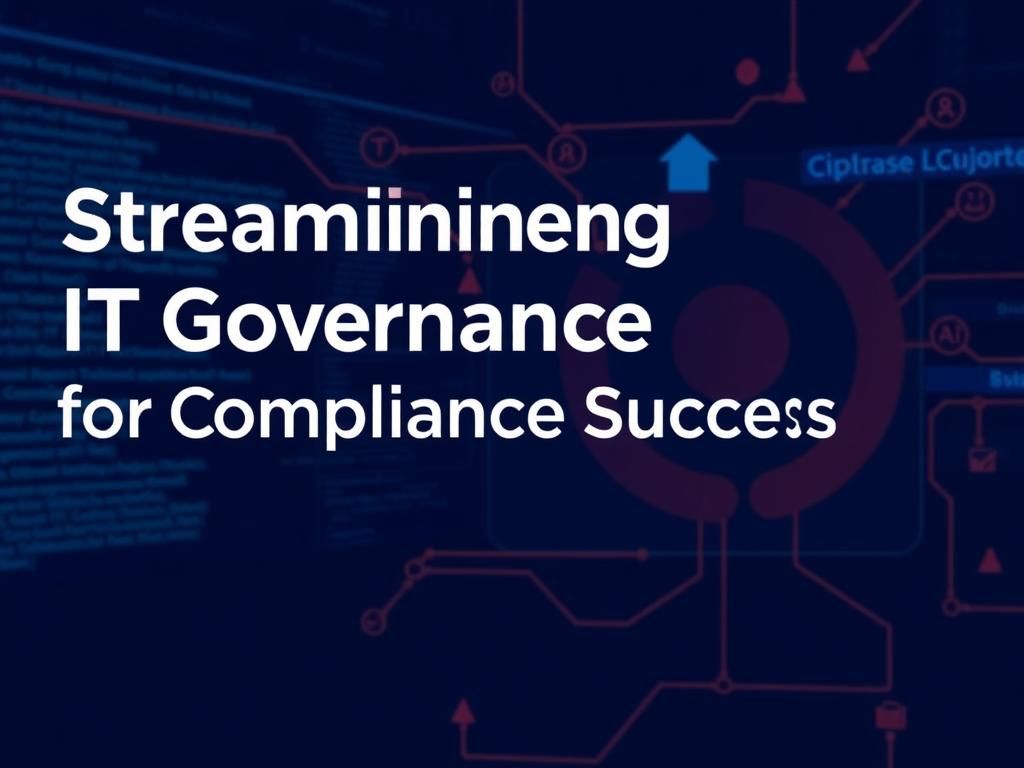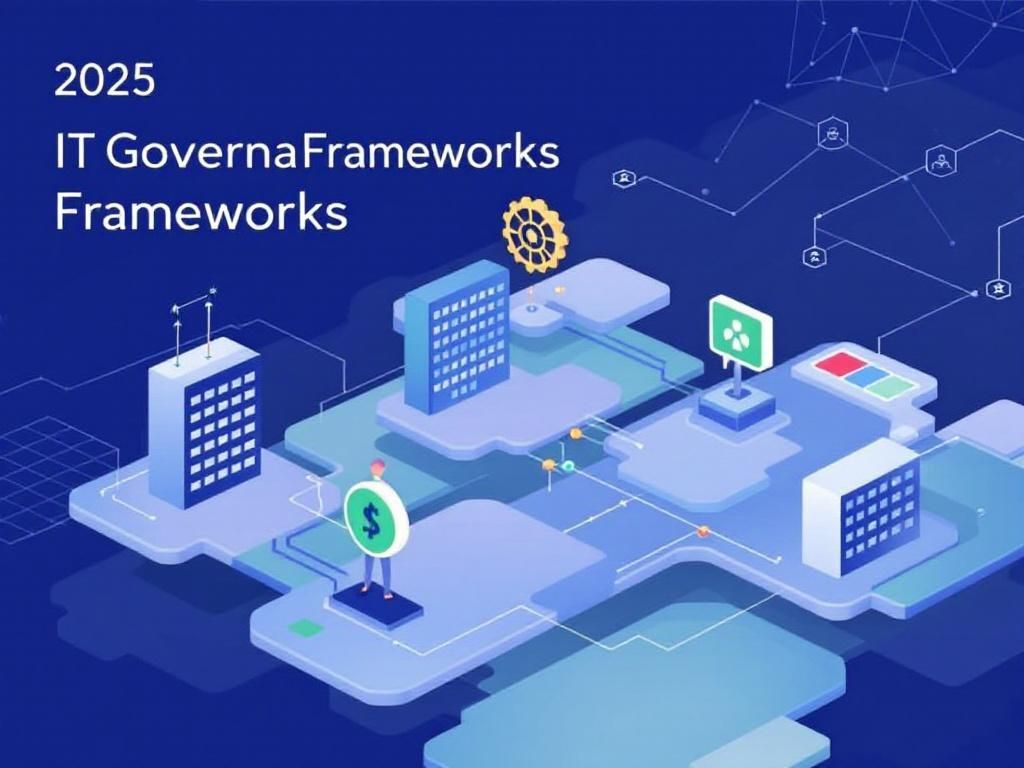Top IT Governance Best Practices for Compliance Success
Discover essential IT governance best practices to ensure compliance and enhance organizational effectiveness in your IT strategy.

In the rapidly evolving landscape of technology and regulation, organizations are mandated to implement effective IT governance frameworks that align with their business objectives while ensuring compliance with various laws and regulations. This article delves into the essential best practices of IT governance that not only facilitate compliance but also improve overall organizational efficiency and risk management. By focusing on strategic alignment, value delivery, risk management, resource management, and performance measurement, businesses can navigate the complexities of compliance successfully.
Table of Contents
Understanding IT Governance
IT governance is a framework that ensures IT investments support business goals. It encompasses the processes, structures, and relational mechanisms that guide how an organization’s IT resources are managed and controlled. Effective IT governance aligns IT strategies with business strategies, encourages accountability, and optimizes IT investments to deliver value.
Key Components of IT Governance
- Strategic Alignment: Ensuring that IT strategies are aligned with business strategies.
- Risk Management: Identifying and analyzing risks to minimize potential impacts on the organization.
- Value Delivery: Ensuring IT investments provide tangible value to the business.
- Resource Management: Deploying the organization’s resources efficiently and effectively.
- Performance Measurement: Establishing metrics to evaluate IT performance and its contribution to business outcomes.
Establishing an IT Governance Framework
Creating an effective IT governance framework involves several key steps:
- Define Governance Objectives: Clearly articulate what the organization aims to achieve through its IT governance initiatives.
- Develop Policies and Procedures: Establish clear policies and procedures that guide IT decision-making.
- Engage Stakeholders: Involve all relevant stakeholders, including executives, IT personnel, and business unit leaders, in the governance process.
- Implement Tools and Technologies: Utilize governance tools and technologies that facilitate compliance and management of IT resources.
- Monitor and Evaluate: Regularly assess the effectiveness of the governance framework and make necessary adjustments.
Best Practices for Compliance
Compliance with regulations such as GDPR, HIPAA, or SOX is integral to IT governance. Here are some best practices to follow:
1. Establish Clear Policies
Documented policies on data management, security, and compliance are crucial. These policies should:
- Be accessible to all employees.
- Clearly outline the roles and responsibilities of each department.
- Specify procedures for reporting non-compliance.
2. Conduct Regular Audits
Regular audits help identify compliance gaps and ensure adherence to regulations. Organizations should:
- Schedule audits on a regular basis.
- Utilize third-party auditors for an objective assessment.
- Implement findings to close compliance gaps.
3. Implement Training Programs
Employee education is a critical component of compliance. Training programs should be:
- Regularly updated to reflect changing regulations.
- Tailored to different roles within the organization.
- Mandatory for all employees to ensure a culture of compliance.
4. Use Technology for Compliance Automation
Leverage technology to automate compliance processes. This can include:
| Technology | Purpose |
|---|---|
| Compliance Management Software | Tracks compliance status and alerts for changes. |
| Data Encryption Tools | Protects sensitive information from breaches. |
| Identity and Access Management Solutions | Ensures only authorized personnel access sensitive data. |
5. Foster a Culture of Accountability
Encouraging accountability within the organization is essential for compliance. Strategies for fostering accountability include:
- Establishing clear roles and responsibilities.
- Rewarding compliance adherence and performance.
- Encouraging open discussions around compliance issues.
Risk Management in IT Governance
Effective risk management is crucial to maintaining compliance. Organizations should adopt a structured approach to identify and mitigate risks:
1. Risk Identification
Regularly assess potential risks to compliance, including data breaches, regulatory changes, and technology failures.
2. Risk Analysis
Evaluate the potential impact of identified risks. Prioritize risks based on their potential effect on compliance.
3. Risk Response
Develop strategies to mitigate identified risks, which may include:
- Implementing additional security measures.
- Investing in compliance training.
- Establishing incident response plans.
4. Risk Monitoring
Continuously monitor risks and the effectiveness of risk mitigation strategies. Adapt and evolve response strategies as necessary.
Measuring IT Governance Performance
Performance measurement in IT governance focuses on evaluating how well IT contributes to business success and compliance. Key performance indicators (KPIs) may include:
- Compliance Rate: Percentage of compliance with regulatory requirements.
- Risk Management Effectiveness: Number of risks mitigated versus identified.
- Cost of Compliance: Overall costs related to compliance activities.
- IT Alignment Score: Measure of how well IT strategies align with business objectives.
Conclusion
Implementing effective IT governance is critical for ensuring compliance within organizations. By following best practices such as establishing clear policies, conducting regular audits, utilizing technology, and fostering accountability, organizations can create a robust IT governance framework that not only meets compliance requirements but also enhances overall business performance. A proactive approach to governance will empower organizations to thrive in the face of regulatory challenges, ultimately driving success in their digital initiatives.
FAQ
What is IT governance and why is it important for compliance?
IT governance refers to the framework that ensures that IT investments support business goals and comply with regulations. It’s important for compliance as it helps organizations manage risk, ensure accountability, and align IT strategies with business objectives.
What are some best practices for IT governance in achieving compliance?
Best practices include establishing clear policies and procedures, conducting regular audits, ensuring comprehensive documentation, aligning IT governance with corporate governance, and providing ongoing training for staff on compliance requirements.
How can organizations measure the effectiveness of their IT governance for compliance?
Organizations can measure effectiveness through key performance indicators (KPIs), regular compliance audits, risk assessments, and stakeholder feedback to ensure that governance practices are being effectively implemented and adhered to.
What role does risk management play in IT governance for compliance?
Risk management is crucial in IT governance as it helps identify, assess, and mitigate risks associated with IT systems. By proactively managing risks, organizations can ensure compliance with legal and regulatory standards.
How often should organizations review their IT governance policies for compliance?
Organizations should review their IT governance policies at least annually or whenever there are significant changes in regulations, business operations, or technology to ensure ongoing compliance and effectiveness.








